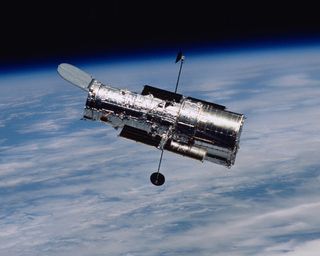Hubble Stares Deep into Glittering Stellar 'Snow Globe'

Just in time for the festive period, the Hubble Space Telescope has released a dazzling image of a globular star cluster filled with stellar glitter — resembling a festive snow globe.
The observation, captured by the veteran telescope's Advanced Camera for Surveys (ACS) in optical and infrared wavelengths, shows the densely-packed central region of Messier 92, one of the brightest globular clusters in the Milky Way. Even at a distance of over 25,000 light-years from Earth, on a clear night, skywatchers can spot this cluster in the constellation of Hercules without the aid of a telescope.
PHOTOS: Hubble's Star Dust Stunners
Messier 92 is known to be "metal poor," otherwise known as an Oosterhoff type II (OoII) globular cluster. In astronomy terminology, "metal poor" means that this cluster is deficient in elements heavier than hydrogen and helium. The observed metallicity of globular clusters can provide clues as to their evolution and provide measurements of their age. As it turns out, Messier 92 is known to be one of the oldest globular clusters in our galaxy, corresponding to an age almost as old as the universe.
Globular clusters are balls of stars and Messier 92, which contains some 330,000 stars, orbits our galactic core.
For more on this beautiful Hubble Observation, explore the ESA Hubble site.
This article was provided by Discovery News.
Get the Space.com Newsletter
Breaking space news, the latest updates on rocket launches, skywatching events and more!

Join our Space Forums to keep talking space on the latest missions, night sky and more! And if you have a news tip, correction or comment, let us know at: community@space.com.
Ian O'Neill is a media relations specialist at NASA's Jet Propulsion Laboratory (JPL) in Southern California. Prior to joining JPL, he served as editor for the Astronomical Society of the Pacific‘s Mercury magazine and Mercury Online and contributed articles to a number of other publications, including Space.com, Space.com, Live Science, HISTORY.com, Scientific American. Ian holds a Ph.D in solar physics and a master's degree in planetary and space physics.
